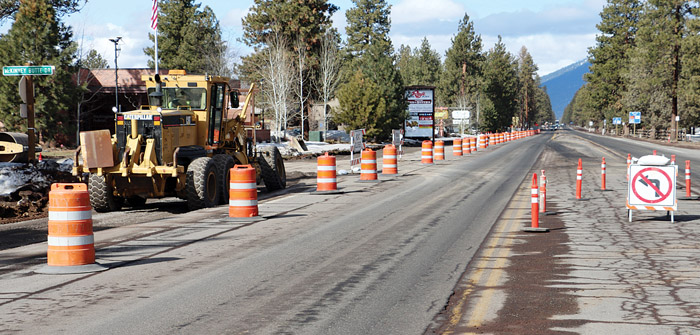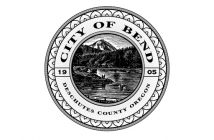(Photo above: Construction has begun on the new roundabout in Sisters | Photo Courtesy of Oregon Department of Transportation)
Roundabouts. They’re a Bend “thing”, right? Bend is peppered with these traffic intersections, usually marked by lovely public art. Now the City of Sisters is getting in on the game, constructing its first roundabout at the intersection of U.S. Highway 20 and Barclay Drive/McKinney Butte Road. Construction has started and will end before Memorial Day of this year.
Based on traffic analysis over the last few years, the City of Sisters determined that the previous intersection didn’t meet the standards for volume-to-capacity and safety conditions. In fact, there had been recent serious crashes at the intersection. This, coupled with a concern for school related pedestrian safety, prompted the city to explore other options. The new roundabout will better accommodate large truck traffic, expand intersection capacity and be safer for people walking and riding bikes.
“Our research into roundabouts shows that they are definitely safer than other forms of intersection control and working with the City of Sisters we have decided it’s the best solution for congestion at US20 and Barclay on the west side. We’ve also shown to the trucking industry that roundabouts work for large loads. We knew that something had to be done to make the intersection safer, and the roundabout is that solution,” says Peter Murphy, Oregon Department of Transportation’s Public Information Officer.
Roundabouts promote safety for drivers, walkers and bikers in several ways. Studies of intersections in the United States that were converted from traffic signals or stop signs into roundabouts found that roundabouts lowered the number of vehicle injury crashes by 75 to 80 percent and all vehicle crashes by 35 to 47 percent. When used properly, roundabouts also decrease pedestrian related crashes by thirty to forty percent and bicycle-vehicle conflicts by least a ten percent. Why are roundabouts so great for people walking and biking?
Slower speeds create a safer intersection. Driving speeds in the roundabout are typically between 15 and 20 miles per hour, allowing easier yielding to pedestrians or bicyclists. Slower speeds also create a safer environment for all users.
One direction travel. Unlike an intersection with stop signs or traffic signals, the traffic in a roundabout is all going the same direction. This way, nobody has to cross anyone’s path, making travel safer.
Easier lane crossing for pedestrians. The small “split” islands that funnel traffic into the roundabout make it safer for walkers because it creates a median. Walkers then only have to cross one lane of traffic at a time.
Bicyclists have two ways of using a roundabout. The lack of cross-directional travel also makes roundabouts safer for cyclists. A person riding a bike can choose to ride through the roundabout by merging into the roundabout when it is safe to do so, then signaling and leaving the roundabout when they need to. Or the bike rider can choose to get off and walk the bike using the pedestrian crosswalks.
Kudos to Sisters for their first roundabout!
Commute Options promotes choices that reduce the impacts of driving alone. For more information, contact Executive Director, Jeff Monson at 541-330-2647 or visit www.commuteoptions.org
Katy Bryce is a freelance writer in Bend. www.katybryce.com



